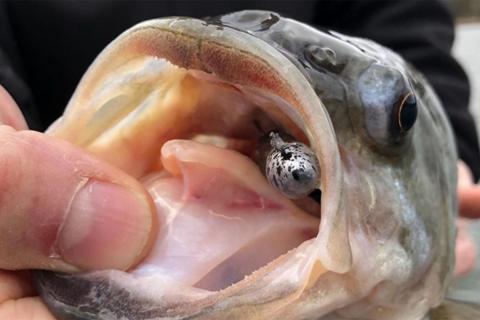
Depending on where you are at, the early season fishing depends predominantly on water temps and fish behavior.
Major League Fishing Pro and Bass Pro Shops/Cabela’s National Pro Staff member, Mike McClelland is no stranger to fishing cold water in the early season but throughout various parts of the year. During those times, he’ll look for bass to school-up, although they can be lethargic and less aggressive in their feeding behavior than anglers witness in warm-water conditions.
Be Precise in Your Search for Bass
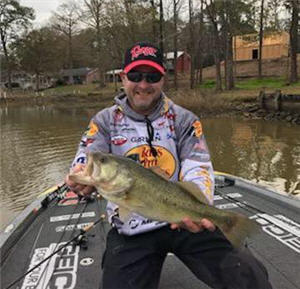
Professional Angler
McClelland has consistently found success at the very end of a channel swing point where the first section of the ledge falls off dramatically and vertically.
“They won’t travel far to get bait, but if you can get it in their zone, they’ll eat it,” he said. “I’m fishing those ledges because the bait congregates there and gives the fish reason to move on top of the ledge and back down without traveling very far.”
Be it natural or the result of power generation like on Table Rock Lake, current positions the fish and the bait due to the current flow. Wind can be a contributing factor also.
Largemouth won’t be far from wood and standing timber, while smallmouth will relate to the end of a bluff that turns to gravel. Kentucky bass will suspend off those gravel points found at the end of certain underwater cliffs.
Learn How to Use Your Marine Electronics
McClelland strongly suggests that anglers learn their electronics to avoid wasting time fishing areas where fish aren’t showing. There is nothing worse than fishing unproductive water, after all, you’ll have few to no fish to show for at the end of the day. Many anglers will purchase the best electronics yet never take advantage of YouTube, instructional videos, hiring a guide to help them set up their electronics, or simply read the manual that comes with their unit. That is the best way to maximize the potential of their unit by learning how to properly use all of the special features afforded and learn to make the necessary adjustments to get a clearer picture.
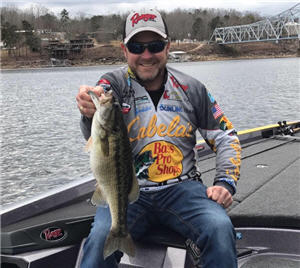
Once he finds an area worthy of intense exploration, he’ll utilize the Garmin Panoptix Livescope to examine the small little details that help him get a “cleaner picture” of what he’s fishing.
“You can see the individual limbs on a tree and fish suspended around it and on the base of the tree. I can fish for those fish out front of the boat long before I ever have to go over them,” he said.
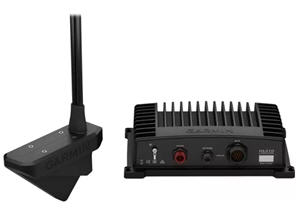
System
Not all of his spots are up on the bank, instead he’ll use his mapping to help envision a bluff line off of the bank or an underwater vertical ledge. “Sometimes it’s the creek channel itself. If I’m looking for those deeper fish to catch on a jig or spoon, I’ll follow that creek channel until I find a bend where those fish are piled up,” McClelland said.
Aggressive Fish Usually Hit a Spoon on the Fall
Bass tend to school up deeper so be it a spoon or a jig, McClelland will pick apart those wads of fish. He’s quick to point out that most anglers “over fish” a spoon during the cold-water periods. Aggressive fish usually hit a spoon on the fall in any water temperature, but the true skill and discipline of the technique is exercised during cold-water situations.

Jigging Spoon
“I am going to raise the spoon up and let it fall down. I don’t fish it on as slack a line as other times of the year. I want to control the rate of the fall but I still want the flutter. Sometimes it’s likened to standing the spoon up on its hooks and letting it sit back on the bottom again,” he said. He actually believes that fishing the spoon slowly gives it more action.
Typically, spoon weights like the Bass Pro Shops XPS Tunsten Jigging Spoon range from a 1/4 - to 3/4-ounce spoon. Shad colored patterns like chrome, white, pink, or purple all have their place. Be sure to let the mood of the fish tell you what they want.
Sometimes he’ll tie a feather on treble hook to add intrigue if bass are missing the spoon or not eating it properly. He’ll add a SPRO barrel swivel like the SPRO Power Swivel to the split ring already affixed to his bait to help eliminate line twist. By doing so, the spoon will fall more freely when McClelland wants it to flutter more.
In colder weather, he prefers 10- to 14-pound Sunline FC Sniper Fluorocarbon fishing line because it is more pliable than Sunline Shooter. He prefers to fish the spoon on a 6:3:1 casting reel paired with a medium-action Falcon Cara McClelland ST Micro Casting Rod.
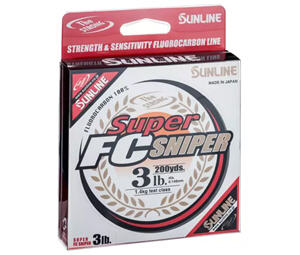
When he finds bass with his Garmin marine electronics in 8- to 15- feet of water, he feels that he can get a SPRO Mike McClelland RkCrawler 55 or 50 to that depth. Cranking in cold-water without a bait that screams finesse, like a shad-style finesse crankbait, is unheard of but McClelland believes that the wider wobble of that crankbait draws bites in colder water. McClelland stresses that suspended fish or those holding off bottom can still get picked off with a crankbait.
“A lot of people have this misconception that their crankbait has to be bumping bottom to get a bite, but that isn’t true,” he said. “Depending on how they’re positioned, I’ll fish the hard-core channel swings with tight contour lines. Where they open up at the end of those swings is where I’m going fish.”
At times, he’ll catch fish holding just off of a ledge by setting his boat in 18- to 25-feet of water where he knows his crankbait will run off that ledge and head into open water. He also doesn’t believe that anglers need to follow the typical method of paralleling a bank with a crankbait. It pays to think outside the box.
Early spring and cold-water conditions in general call for plenty of 8- to 10-pound Sunline FC Sniper fluorocarbon fished on a 5:1 or 6:3:1 gear ratio. The slower ratio forces McClelland to slow down and fish the bait at the proper speed that appeals to the sluggish metabolism of the fish.
Mike McClelland's Advice
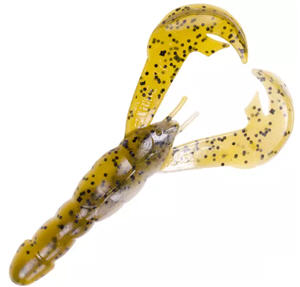
Lures - Green Pumpkin/Pearl Belly
During the cold weather months or when cold water is in play, anglers need to adjust their mindset. “You can’t go out there in anticipation of covering lots of water and catch a lot of fish. You need to slow down and get in an area where you seeing the right things going on. If I can’t get them to bite a crankbait or a spoon, a jig this time of the year is a big deal for me."
When all else fails, he’ll look to a homemade 1/2 - to 5/8-ounce jig paired with a Big Bite College Craw. When water temperatures dip below 46-degrees, he’ll opt for a Big Bite Baits twin tail grub. He favors a pale colored pumpkinseed skirt and trailer under these conditions.
Tip: Shop Cabela's Action Twin Tail Grub at www.basspro.com
- 4024 views

